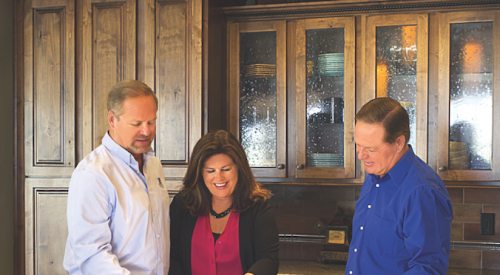|
Customer satisfaction measurement is the hottest tool in housing today, and for good reason. What buyers think and say about their builder drives referral sales the key to growth and higher profitability.
History Maker Homes began experimenting with customer satisfaction measurement in the early 1990s by employing a local marketing firm to do surveys. "We also had them do focus groups and one-on-one interviews," CEO Bryan Mitchell says. "When we decided to use NRS, they'd been in business only a few years."
"We could have continued to do it ourselves," president Nelson Mitchell says. "But we really think the data is suspect unless it's collected by a third party, and NRS has so many clients around the country now, it gives us the opportunity to benchmark against a true national sample of over 200 builders."
NRS mails each HMH buyer, at 30 days and 90 days after closing, a 60-question survey. In addition to the critical "would recommend" question, the NRS survey includes questions on customers' satisfaction with almost every aspect of History Maker's product and their experiences throughout the home buying process. Included are questions on home features, floor plan, quality of materials and workmanship, salespeople and the sales process, the lending process, the construction process and walk-throughs, number of items identified for correction, time to make corrections and every aspect of warranty service.
Exposure to other builders through Builder 20 club benchmarking probably contributed to HMH's evolution into something of a measurement junkie. The firm is now highly computerized and investing heavily in software enhancements to feed a voracious appetite for data on operations of every department. For instance, the sales department now tracks and measures every aspect of operations using Computers For Tracts software.
Sales vice president Cliff Crumpler says the changes boggle his mind. "When I started with History Maker eight years ago, we did contracts by hand with a calculator, on a three-page form. Now we have computers in the sales offices that have the CFT software tracking traffic by source and generating follow-up letters to prospects. We qualify buyers right on the computer, and we can calculate in 15 seconds how much the monthly payment will change by adding a list of options. Monthly payment is critical. That's how we sell. About 65% of our buyers are first-time homeowners coming out of apartments. They want to know the down payment and monthly payment."
On the construction side, HMH tracks the number of homes closed against a monthly budget, and construction time reports track the average number of days it takes to build a home. Builders receive a bonus on an 85-calendar-day target. The current average is 76 days. All aspects of quality inspections, new home orientations and final sign-off meetings also are tracked. A builder bonus is also tied to the meetings and inspections conducted by the new home orientation specialist, a customer advocate with a 300-item checklist who walks homes before the customer does.
The customer service department is measured on completion of service requests and completion of walk-throughs at 11 months, a pro-active inspection to identify items that might compromise warranted systems as the end of the warranty period approaches. "We want those systems operating without a hitch when the warranty expires," Nelson Mitchell says.
Both Mitchells point out that the goal of all this measurement is not to use data as a club to intimidate employees, but rather to provide the information that process improvement teams need to keep fine-tuning operations in every department.












